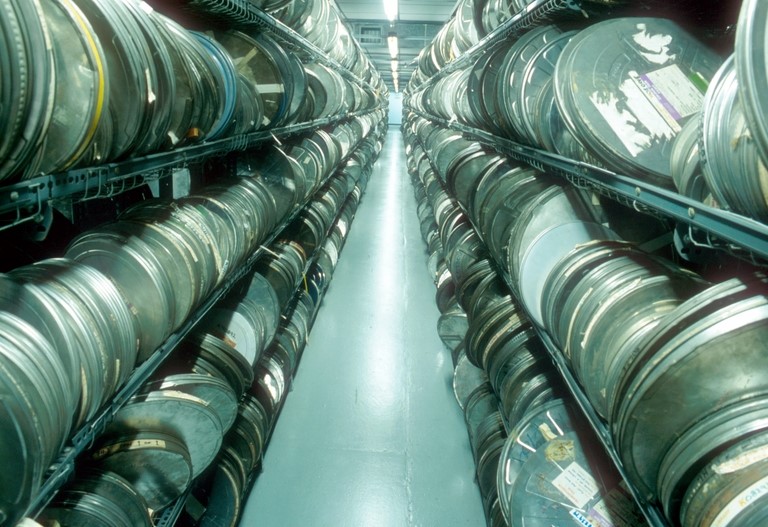Richard Wright runs Preservation Guide, a consultancy on audiovisual preservation. Before retiring, Richard worked as a Technology Manager at BBC Information & Archives from 1994.
Not everyone knows that there even are television archives. Europe is fortunate in having a tradition of public service broadcasters. They are publicly supported in various ways (licence fee, limited advertising, direct government funding) but all have a remit to provide high-quality information and entertainment. Broadcasting can be seen as ephemera, but yesterday's ephemera becomes today's heritage. Of particular interest in a time of fake and false news is the role of public service broadcasters in providing quality factual material: news and current affairs.
Public service broadcasters, particularly in Europe, have also led the way in maintaining archives of their productions. While drama and entertainment programmes are kept for repeats and for sale to other countries, factual content is heavily recycled to add depth and interest to current programmes. In the BBC, about 30 to 40 percent of 'the news' is actually archive material. Other uses include biographies; retrospectives on people, places and political situations; cultural history; and a wide range of factual content that needs archive footage for context and historical memory. Up to 2010, about 20% of the BBC television archive was accessed each year, and 95% of that use was internal: back into the BBC for adding depth to new programmes. The other 5% was commercial use. Broadcast archives had little or no public access. In the UK, public access to BBC Archives was via copies of tapes sent from the BBC to the British Film Institute.
Broadcast archives are large: the BBC archive is about one million hours, and most national public service broadcasters across Europe have archives of several hundred thousand hours. Because of legal deposit legislation (covering national and local TV and radio), the Swedish national audiovisual collection is six million hours!

One row of the old BBC archive at Windmill Road in London
Over the last 20 years the technology of television has completely changed. Analogue transmission from huge aerials to bulky cathode-ray tube receivers has been replaced by digital transmission from aerials, satellites and fibre-optic cables, sent to flat screen LED devices. An even greater change is 'television' sent over the Internet and viewed on a computer monitor, tablet or mobile phone.
Archiving has also changed. It used to be that only the broadcaster could make a professional archive, because 'off air' recordings on VHS tape were of low quality, and required a lot of manual effort to implement. With digital technology, it is relatively simple and cheap to have an automated process to grab virtually all of a nation's television from satellite transmissions.
The new technology, combined with a growing appreciation of the significance of broadcasting, has led to the rise of national television (or broadcasting or audiovisual) archives. Poland, Hungary, Latvia in Europe and Columbia, Mexico, Singapore and a range of other countries now have some form of national institution which collects broadcasting. A related change is for national libraries to expand to cover national broadcasting, possibly because of 'legal deposit' legislation requiring broadcasts to be collected and preserved. These new institutions are good news for the public, as they are all committed to developing wider public access, including Internet access.
BUT – these are off-air recordings. They are better than the VHS tapes of the 1980s, but not as good as the output from the camera and the quality used in producing programmes. Off-air recordings are fine for viewing copies, but have real quality limitations when it comes to re-purposing the content for new programmes. The video signal for satellite transmission is compressed by a factor of 10 to 20. This is lossy compression, meaning original quality is not recoverable. In contrast, professional TV archives try to save uncompressed or losslessly compressed signals.
Who cares? The future will care. Lossy compression today leads to 'cascaded compression' in the future, when material is recoded to new standards. Decades of experience show that there is a great risk when cascading: eventually there will be significant failures. We already see dropout, freezing and blocking of the image as a regular feature of digital television. Most such problems are caused by errors in reception, but transcoding errors and cascaded quality loss are the time bomb ticking in all archives containing content with lossy compression – meaning all off-air archives.
In addition, professional TV archives no longer get as much master material as they used to. In 1980 the BBC made about 90% of its output in-house, so the archive could get 'the master tape'. Now that figure has been cut to 30%. The rest of the content is made by independent production companies, which come and go in a volatile business. The independents send in a file that can 'go to air' – a transmission file, with lossy compression and not significantly better that an off-air recording.
So: the future of television archives is that, having faced the hurdle of digitising their old analogue content in order to keep it alive, they now face a future of mainly holding reduced quality viewing copies. The future of master quality (production quality) video content is very much in doubt.

Read more...